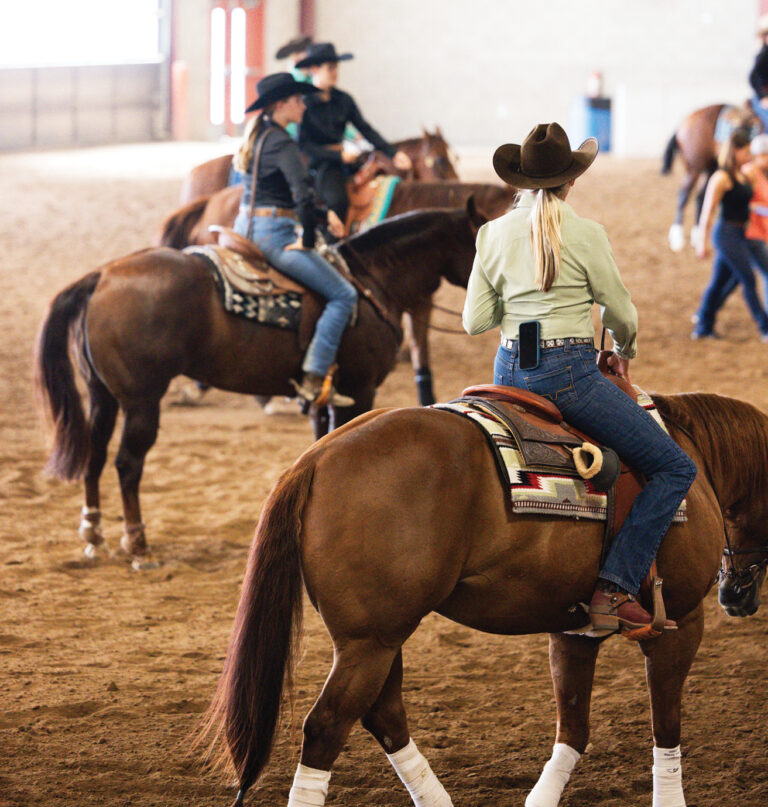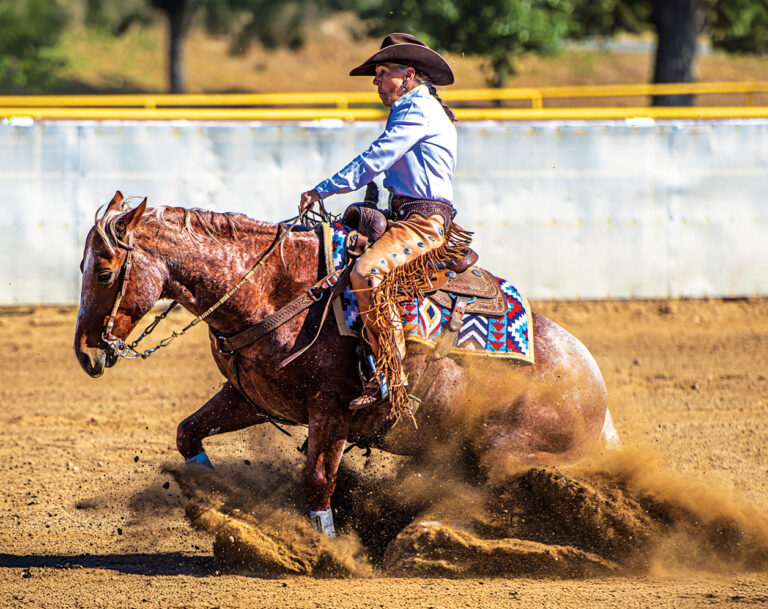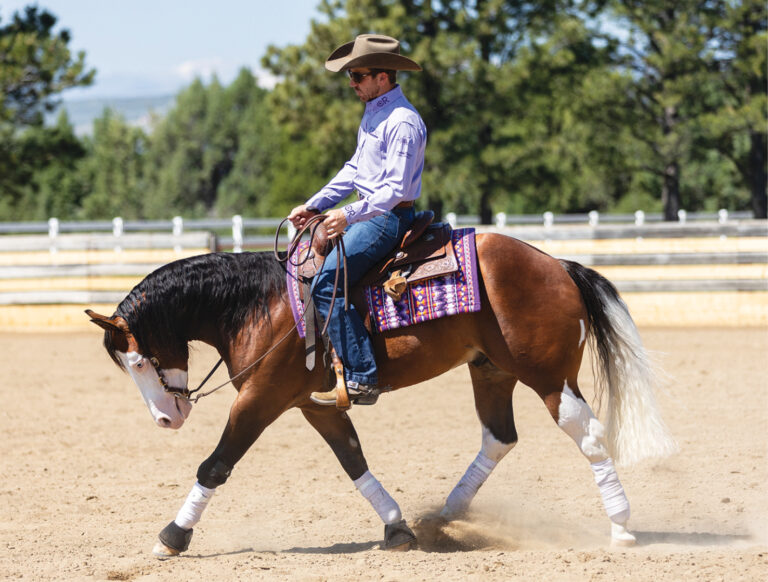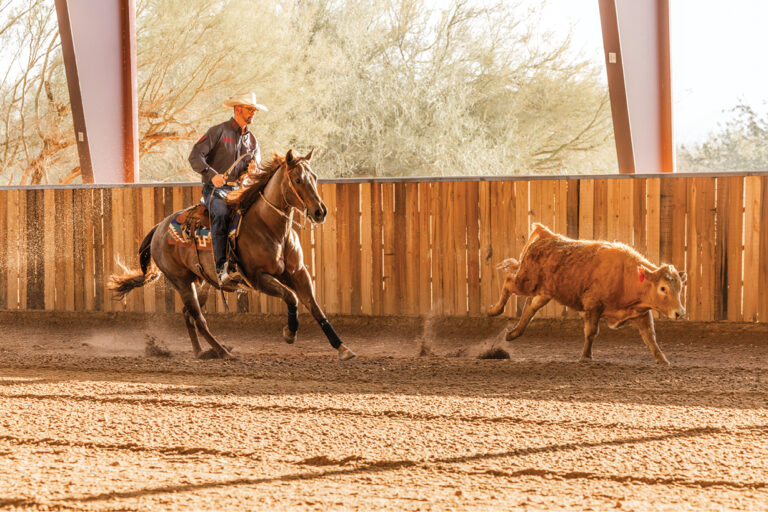Horse people have long debated the wisdom of showing (or racing) 2- and 3-year-old horses (and younger). The oft-heard question is, “Are they too young?”
This year, at least two associations are responding. The American Paint Horse Association announced its new Fall Championship Show, scheduled for November 6 to 15, 2008, in Fort Worth, Texas, as an adjunct to its regular World Championship Show, which starts in June. The purpose is to move many young-horse classes from the summer show to fall, giving youngsters an additional five months before they face the pressure of world-level competition.
The fall show will host the World Championship title classes for weanling and yearling halter, yearling longe line and 2-year-old performance horses, plus the 3-year-old Challenge classes in Western pleasure, hunter under saddle, and reining. (For more information, go to apha.com.)
And, at the National Cutting Horse Association’s annual convention this year, it was proposed that the NCHA Futurity (which starts in late November) change from 3-year-olds to 4-year-olds. A Web site, equinepoll.com, was cited as revealing that over 95 percent of respondents were in favor of the change. A committee chairman said the NCHA needed to do research and study the pros and cons.
I can name a big “pro” for waiting longer before subjecting young horses to the pressure-cooker world of national shows. But there’s also a potential “con.”
IN THEORY…
First, the pro: In theory, allowing young horses more time to mature before facing the physical and mental pressure associated with high-level competition is great. This is true in any event. But it’s especially tough to get a 2-year-old ready to show on the rail early in the year (such as at the APHA’s summer World Show, before they launched the fall event).
Now, the con: Reality might rear its ugly head. There will probably be a trainer and/or owner who says, “Geez, that gives me five more months to get that horse ready so I can beat everyone else.” If the trainer wins, the benefit could be diluted. People may start using the additional time for more training, rather than allowing the youngsters extra time to grow up.
I’ve started a lot of horses for 2-year-old futurities. It’s tough. (I now focus on the 3-year-old reining and reined cow horse futurities.) You have a deadline that doesn’t change. With the APHA change from summer to fall for the youngest horses, you’d hope to see those babies left in a field three or so months longer, so they’re older before they’re started under saddle. But it may not happen. Because no change in association rules will change the element of human nature that always seeks a competitive edge.
STARTING EASY
Starting horses young isn’t necessarily bad if you’re smart about it. In 1988, I rode a 3-year-old colt called Smart Little Calboy to my first National Reined Cow Horse Association Snaffle Bit Futurity championship. The editor of a major magazine refused to run a story about my win because, in her opinion, I’d started the horse too young. (I’d started him lightly under saddle early in his 2-year-old year. I didn’t learn until later that he was a July colt.)
It turned out he was the youngest horse I’d ever started, but it worked out well; he remained healthy and sound. He went on to win an AQHA reserve world championship in cutting and was AQHA National Champion Reining horse several years after that. He’s still breeding mares today; he’s 23 years old.
What I learned from starting him young prompted me to start a lot of my horses just before they turn 2, which is now standard practice in the futurity field. But the key to my horses’ longevity is that I start them easy.
I may ride my young horses for more days than some trainers do, but I’ll put fewer hours on them. That matters. A lot. I work hard not to stress them. I keep my arena footing worked and watered to minimize concussion on feet and joints. And I do a lot of low-impact work at the walk on my colts and fillies, such as lateral movement. That way, they slowly build physical strength and mental maturity.
To me, starting babies is like building a house. Have you ever watched a cement foundation being poured? The builders take special care—they don’t want it to dry too quickly, because that makes the cement brittle. The slower it dries, the stronger it is. Without a strong foundation, the rest of the structure will fail.
Early training is the foundation of any horse. Without a good, strong one you won’t have a horse that lasts. And it takes a long time to build a good, strong foundation, which is why I start my futurity horses young. Ultimately, it lessens the pressure on them.
I’m a big believer in career longevity for horses, and have written repeatedly about that on these pages. Horses from my program are out there winning on a national level into their mid- to late-teens. Good horses don’t grow on trees. I want mine to last. By riding smart, I can help that happen.
FOLLOW THE MONEY
The show industry has brought the young-horse debate upon itself. In today’s performance-horse world, all the big money is in young-horse futurities. A futurity can make—or break—a trainer’s or breeder’s career. Owners can put pressure on trainers, too. They’re pouring lots of money into their young horses, and they generally want results sooner rather than later.
A lot of breeders don’t want the “give ’em more time” changes to happen. The longer it takes to get a youngster to the show pen, the longer the breeder may have to hold on to him, which means a lower return on investment (if breeding is your livelihood), and a higher risk of something going wrong before you sell. But given the fact the debate is getting louder, they may need to adapt.
Every year, the young-horse topic is discussed at the American Quarter Horse Association convention. Someone proposes ending 2-year-old performance classes and putting more money in classes for 3- and 4-year-old horses. It’s the 2-year-old Western pleasure classes that draw the most fire. But year after year, those classes continue to offer the biggest purses. If the AQHA were to end its 2-year-old rail classes, there’d still be the All American Quarter Horse Congress and Reichert 2-year-old futurities. They pay. Big.
The more money that’s out there, the more pressure those young horses will bear. So if you really want to help youngsters, follow the money…and propose that purses be diverted to older horse events. Because as long as there’s money to be won, the buck will stop there.
A multiple AQHA world champion in a variety of events, Bob’s other wins include three NRCHA Snaffle Bit Futurities, the NRHA Futurity, and two World’s Greatest Horseman titles. He was the first recipient of the prestigious AQHA Professional Horseman of the Year honor in ’96. His Avila Training Stables, Inc. is in Temecula, California. To learn more, go to bobavila.net.




